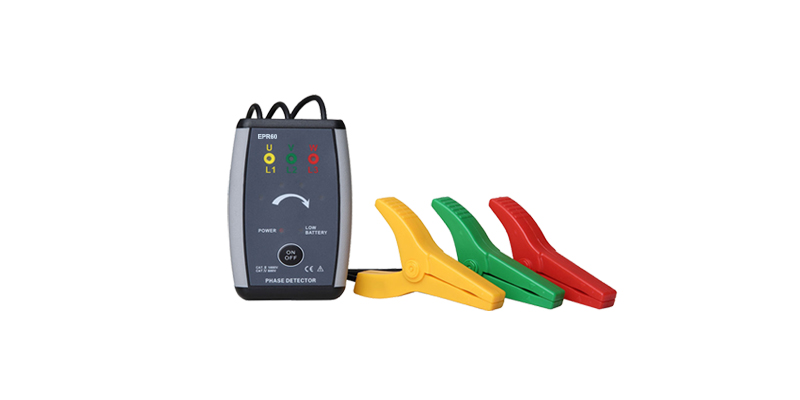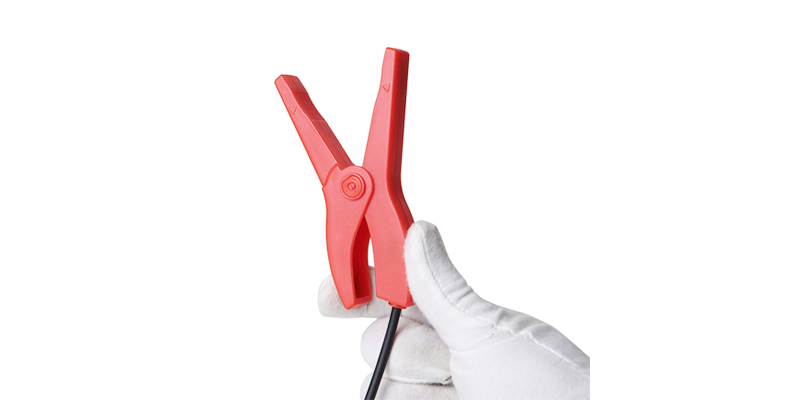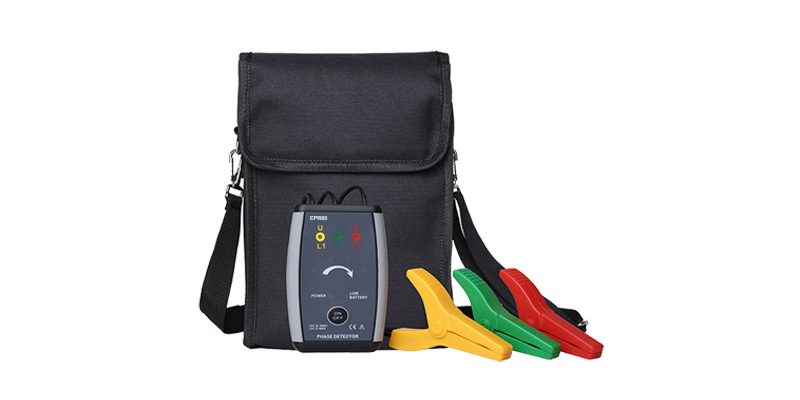


Three Phase Rotation Indicator (Non-contact phase detector)
General Information:
The EPR60 three phase rotation indicator (also called: non-contact phase detector) is a major breakthrough in the traditional phase sequence detection method. In the traditional phase sequence detection, the terminal of the three-phase wire must be removed, and the three exposed clips or test pins of the phase sequence meter must be connected to the exposed 3 live wires, and EPR60 adopts clamp-shaped non-contact inductive measurement. There is no need to remove the wires or touch the high-voltage exposed live wires. Directly clamp the three ultra-inductive high-insulation clamps to the insulation skins of the three-phase live wires to detect phases. At the same time, sound and light indicate the positive or negative state of the phase sequence of the three-phase power supply.
The EPR60 three phase rotation indicator also has functions such as live line inspection, simple power inspection, open circuit search, break point location, line maintenance and so on.
The EPR60 three phase rotation indicator is quick and convenient to detect, and the display is clear at a glance, which greatly improves the safety of on-site testing, effectively protects the personal safety of operators, and increases productivity. It is the three-phase power supply phase sequence, motor detection, and circuit maintenance. Safety equipment.
Main technical data table:
| Items | Technical Specifications |
| Functions | Phase detection (positive phase, reverse phase), live line check, simple power check, lack of phase judgment, open circuit search, break point location, line maintenance. |
| Power Supply | 9V battery, continuous use time is about 70 hours. |
| Measurement Method | Non-contact clamping method |
| Wire Position | The wire to be measured is in the center of the jaws |
| Frequency | 50Hz/60Hz automatic recognition |
| Live Power Range | AC70~1000V, 45/65Hz (sine wave continuous input), static electricity detection. |
| Measure The Highest Voltage | AC1000V |
| Clamp Wire Size | Outer diameter ø1.5mm |
| Display | [Normal phase] The 4 phase detection lights turn on sequentially in a clockwise direction. |
| [Reverse phase] The 4 phase detection lamps turn on in order in a counterlockwise direction. | |
| [Live electricity] L1, L2, and L3 lights are on within the voltage setting range. | |
| [Lack of phase] L1 or L2 or L3 light is off. | |
| [Open circuit] L1 or L2 or L3 light is off. | |
| Buzzer | [Normal phase] The instrument emits intermittent short beep. |
| [Reverse phase] The instrument emits a continuous long beep. | |
| Battery Check | The POWER indicator light is on after the power is turned on; the LOW BATTERY light is on when the battery is insufficient. |
| Clamp Lead Length | 0.6m |
| Instrument Size | Length 117.6mm×Width 81mm×Thickness 25mm |
| Automatic Shut-Down | About 6 minutes after power on, the meter will automatically shut down to reduce battery consumption |
| Battery Voltage | When the battery voltage drops to about 5.2V, the battery voltage low symbol is displayed, reminding to replace the battery |
| Weight | Meter: 260g (including battery) |
| Maximum Rated Power | 300mVA |
| Working Temperature and Humidity | -10℃ ~ 55℃, below 80%rh |
| Storage Temperature and Humidity | -20℃ ~ 60℃, below 90%rh |
| Dielectric Strength | 3.7kVrms |
| Suitable For Safety Regulations | EN61010-1: 2001, EN61010-031: 2002, pollution level 2, CAT III (600V), instant overvoltage 6000V. |

